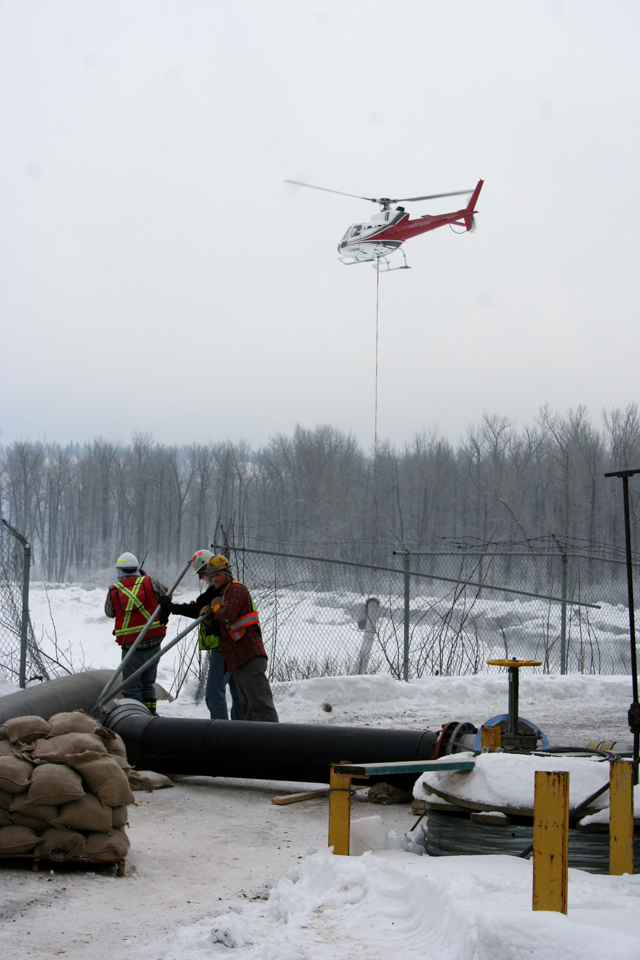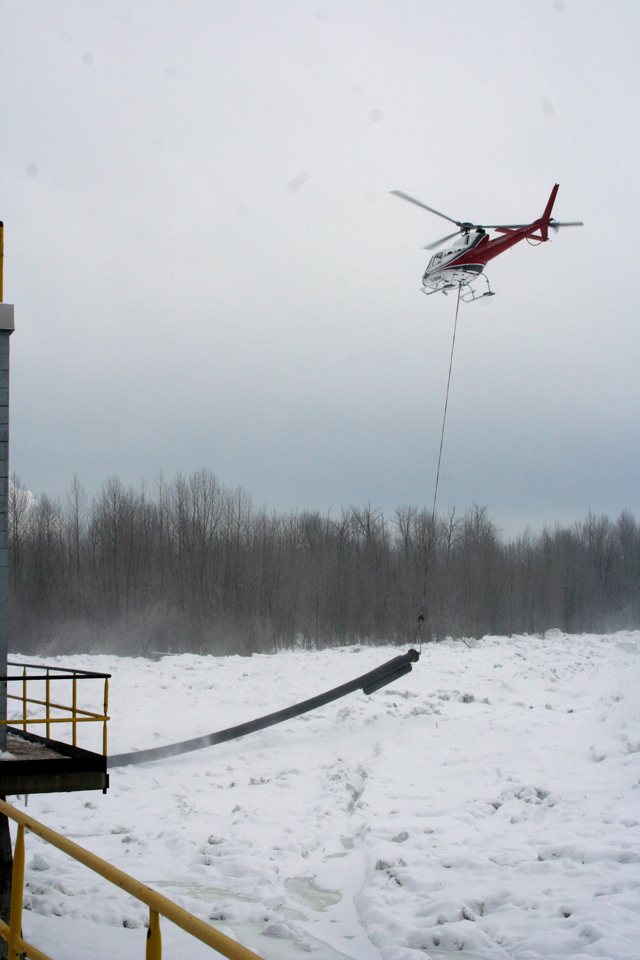Warm Water Pipeline Could Begin Testing Tomorrow
By 250 News

Crews work to complete the warm water pipeline (photo courtesy of the City)
Prince George, B.C. - Another measure aimed at mitigating the effects of the Nechako River icejam will come on-line tomorrow...
It’s been dubbed the "warm water treatement" option and involves piping hot water from Canfor’s Intercon Pulpmill, three-kilometres down to a pump station at the river, where it will be cooled to 15-degrees Celsius before entering the Nechako.
With the river temperature hovering around one-degree, the warm water is expected to soften and break up the frazil ice, creating open channels that will complement the work being done by the Amphibex water excavator.
 The $400-thousand dollar pipeline is in place and "substantially" complete according to City Liaison Officer, Kevin Brown.
The $400-thousand dollar pipeline is in place and "substantially" complete according to City Liaison Officer, Kevin Brown.
The picture, at left, shows a helicopter laying an outflow pipe into the Nechako from the Canfor pumphouse on shore (courtesy of City of Prince George).
Brown says crews spent yesterday and will spend the rest of today installing some remaining valves and testing parts of the pipeline with a view to being ready to test the warm water tomorrow.
Meantime, Brown says it’s remarkable to see the difference in water levels at the foot of the jam, since a large channel broke open late Friday afternoon. (click here for previous story)
Previous Story - Next Story
Return to Home









